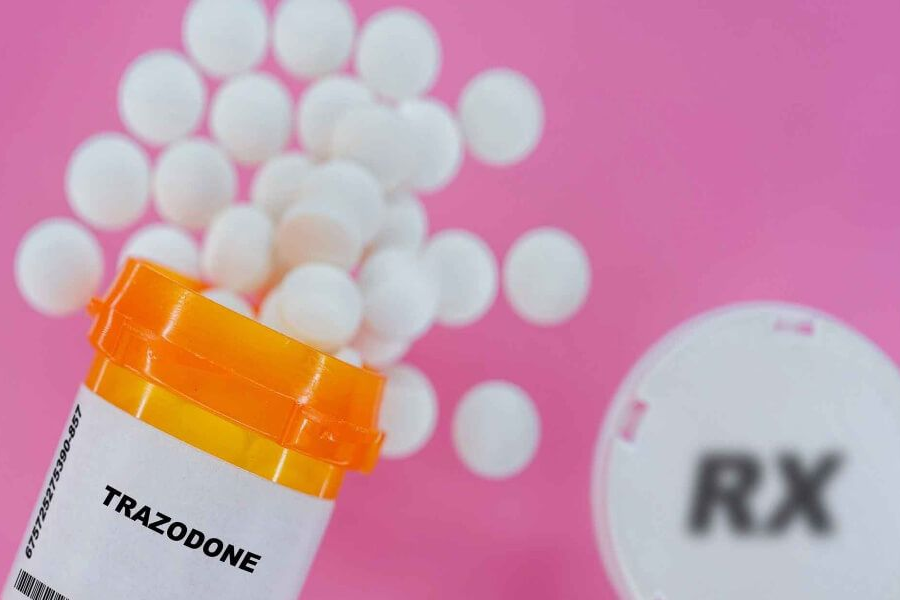Your cart is currently empty!
One drug that is frequently recommended to address ailments including anxiety, depression, and sleeplessness is trazodone. . While it has helped countless individuals regain a sense of normalcy and rest, understanding how long trazodone stays in your system is crucial for various reasons, including safe medication management, avoiding unwanted interactions, and preparing for medical procedures or drug screenings.
This article dives deep into the pharmacology, metabolism, detection timelines, and factors influencing how long trazodone lingers in your body.
What is Trazodone?

The antidepressant drug trazodone is a member of the class of drugs known as serotonin antagonist and reuptake inhibitors (SARIs). . It was first approved by the FDA in 1981 for the treatment of major depressive disorder (MDD). However, its sedative effects have also made it a popular off-label treatment for insomnia and anxiety.
Unlike traditional SSRIs (selective serotonin reuptake inhibitors), trazodone works by both blocking certain serotonin receptors and inhibiting serotonin reuptake, enhancing the availability of this neurotransmitter in the brain. This dual action can have mood-lifting and sleep-inducing effects.
Pharmacokinetics: How Trazodone Is Processed in the Body
To understand how long trazodone stays in your system, it’s important to first explore how it is absorbed, distributed, metabolized, and excreted — collectively known as pharmacokinetics.
Absorption
Trazodone is absorbed fairly rapidly in the gastrointestinal tract. After taking an immediate-release form, peak plasma concentrations happen 1–2 hours later; for extended-release (ER) formulations, they happen 3–4 hours later.
Distribution
Once absorbed, trazodone is distributed throughout the body.It enters many tissues and is somewhat protein-bound in the blood.
Metabolism
The liver uses the cytochrome P450 enzyme system, particularly CYP3A4, to metabolize trazodone. The major active metabolite formed is m-chlorophenylpiperazine (mCPP), which contributes to some of the drug’s side effects and therapeutic effects.
Excretion
Trazodone and its metabolites are eliminated mainly through the urine, and to a lesser extent, through feces. This final phase is what determines how long the drug remains detectable.
The Half-Life of Trazodone
The term half-life refers to the time it takes for half of a drug’s active substance to be eliminated from the bloodstream.
- The half-life of trazodone is approximately 5 to 13 hours, depending on individual physiology and the formulation used.
- This means that after taking a single dose, it can take 1 to 3 days for trazodone to be eliminated from your body entirely.
Here’s a quick timeline:
- After 1 half-life: 50% remains
- After 2 half-lives: 25% remains
- After 3 half-lives: 12.5% remains
- After 4 half-lives: 6.25% remains
- After 5 half-lives: ~3.125% remains (generally considered negligible)
How Long is Trazodone Detectable in Drug Tests?
Although trazodone is not typically screened for in standard drug tests, understanding its detection windows is important for those undergoing more comprehensive testing or concerned about interactions.
Urine Tests
The most used method of drug testing is urine testing.Urine typically contains trazodone for one to three days following the previous dosage. In long-term users, this window might be a little longer.
Blood Tests
In blood plasma, trazodone is typically detectable for up to 24 hours. Since blood tests are more invasive and expensive, they are less commonly used unless a very recent ingestion needs to be confirmed.
Saliva Tests
Saliva testing for trazodone is rare and not standardized. However, if conducted, it may detect trazodone for up to 24–48 hours post-use.
Hair Follicle Tests
Up to 90 days can pass before drug usage is detected by hair tests. . While it is unlikely for trazodone to be a focus in hair testing panels, its presence can still be recorded if specifically tested for.
Factors Affecting the Duration of Trazodone’s Effect on Your Body
The duration that trazodone remains in your body can vary significantly between individuals. Below are several influencing factors:
Dosage and Duration of Use
- Higher doses of trazodone, such as 150 mg or more daily, are likely to stay longer in your system than a 25 mg dose used for sleep.
- Chronic use can lead to accumulation in the body, prolonging its presence even after stopping.
Age and Metabolism
- Older adults tend to metabolize drugs more slowly due to decreased liver and kidney function.
- People with a faster metabolism (younger, active individuals) may eliminate trazodone more quickly.
3. Liver Function
- Since trazodone is primarily metabolized in the liver, impaired liver function can significantly prolong its half-life.
4. Kidney Function
- Although not the primary organ for metabolism, the kidneys help eliminate the by-products of trazodone. Impaired kidneys can slow this process.
5. Other Medications
- Some drugs, especially CYP3A4 inhibitors like ketoconazole or erythromycin, can slow down trazodone metabolism.
- Conversely, CYP3A4 inducers (like carbamazepine) may speed up elimination.
Why Knowing This Matters
1. Medication Management
Trazodone’s sedative effects make it essential to know how long it lasts in the body, especially if transitioning to another medication to avoid interactions or overlapping effects.
2. Driving and Operating Machinery
Understanding how long trazodone stays active helps you make informed decisions about when it’s safe to drive or perform tasks requiring full alertness.
3. Drug Testing
Although it’s not a controlled substance, trazodone can still cause false positives in drug screenings for MDMA due to its mCPP metabolite.
4. Medical Procedures
Knowing how long the drug stays in your body is vital if you’re preparing for surgery or procedures where anesthesia or other drugs are involved.
How to Speed Up Elimination of Trazodone
While there’s no magic method to instantly clear trazodone from your system, you can support your body’s natural elimination processes:
- Hydration: Drink plenty of water to assist your kidneys.
- Exercise: Promotes metabolism and circulation, helping eliminate waste.
- Healthy diet: Supports liver function with nutrients and antioxidants.
- Avoid alcohol: Alcohol can strain your liver and prolong drug metabolism.
Always consult your doctor before trying to alter your medication schedule.
Dive deeper into the real stories behind today’s headlines on RealsStory.com.


Leave a Reply